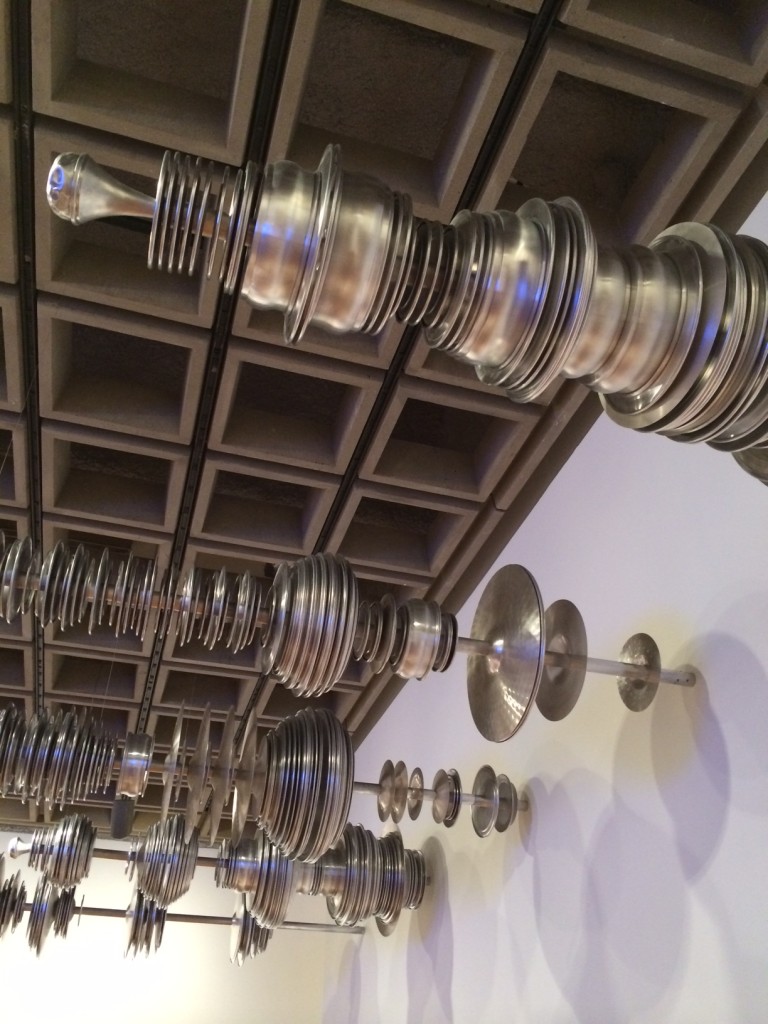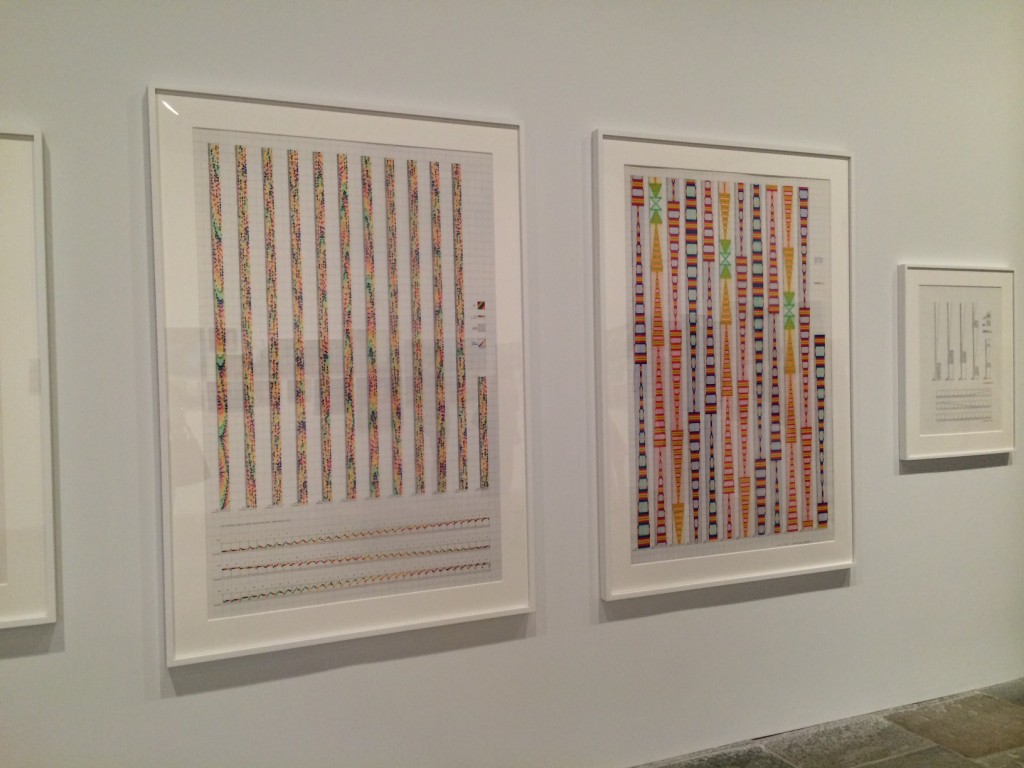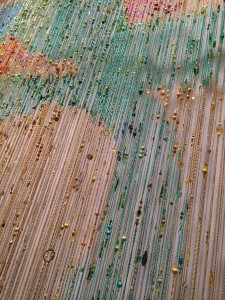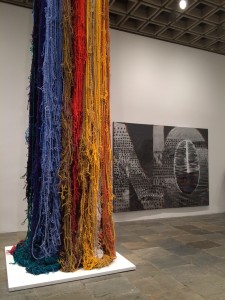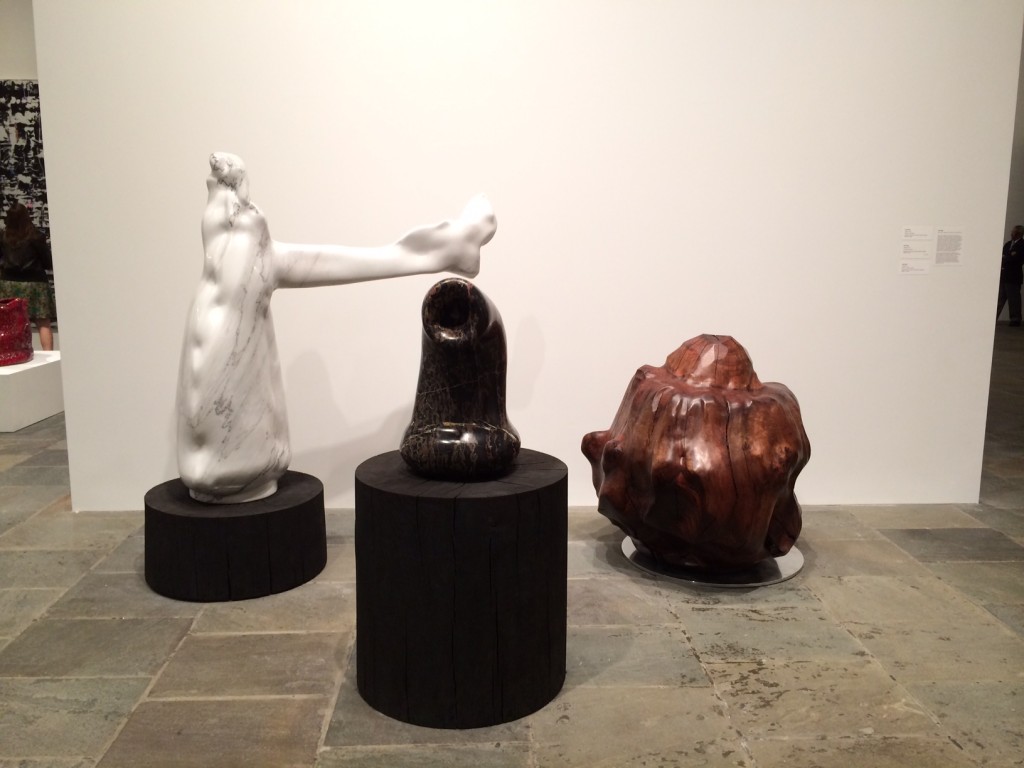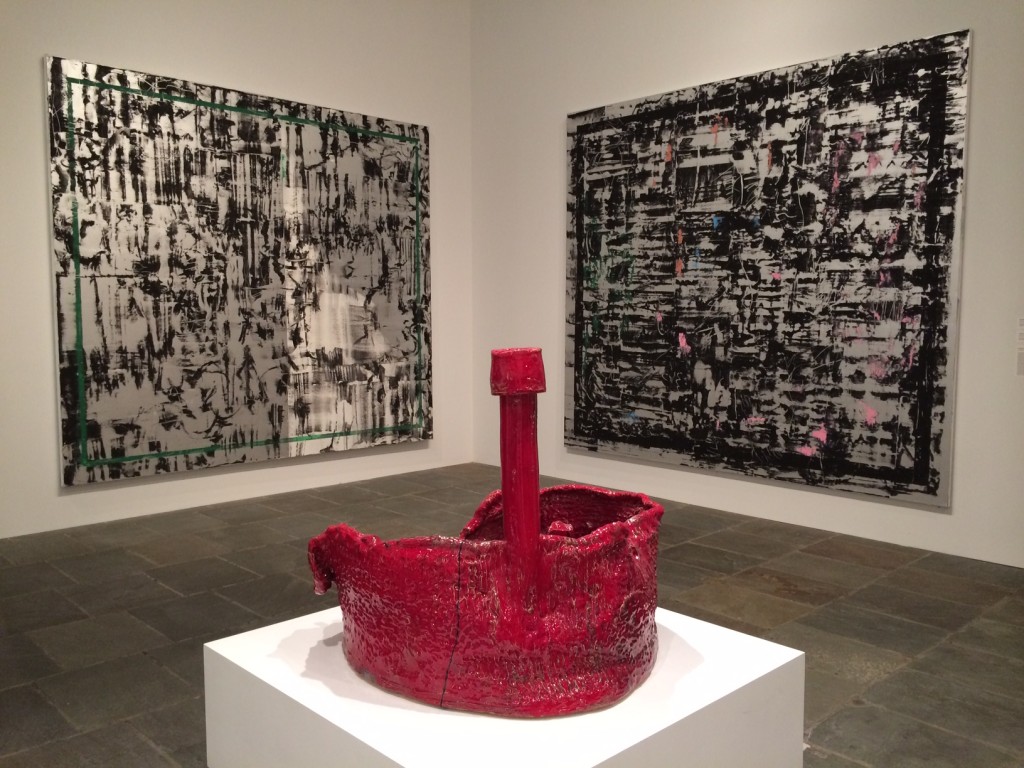Anthony Elms uses the permanence of Marcel Breuer’s building to present snapshots of American art, and artists whose work reflects fleeting, temporal moments in a country that is in constant flux. The most exciting work in his selection is Zoe Leonard‘s 945 Madison Avenue, 2014 (above). Leonard creates a camera obscura within the Whitney for an amazingly immersive, and now prize-winning, installation. She completely darkened a gallery except for a small hole in the window to allow for a stream of light to pour in. The beautiful Upper East Side apartment buildings across the street shine through and are reflected inversely onto the gallery wall. By way of upside-down voyeurism, we watch while their blinds open or close as the afternoon sunlight shifts through the homes. Every few moments I kept noticing a pulse of light scanning above my head on the gallery’s gridded ceiling and realized I was seeing the cars and taxis driving along Madison Avenue. Focusing closer I could also see people walking along the sidewalks, going about their day, unaware of being watched from inside the museum. I glanced down to find the clouds beneath my feet, quietly drifting by as I set to leave this moment and continue on my path through the Whitney.
Aviarium, 2014 (above) by the recently deceased Terry Adkins, is a silent installation on the 2nd floor of various-sized cymbals; instruments that would make such an incredible noise if they weren’t so perfectly balanced and spaced apart. Each composition is a visualization of the diverse sonic patterns of various species of songbird. A silent work about beautiful sounds.
Stuart Comer’s Biennial on the 3rd floor is a dizzying churning of ideas and mash-up of complex languages, messages and media. There was way too much to process so I focused on a quietly fascinating group of drawings by the late Channa Horwitz (above). She devised an intense system of notations based on numbers 1 through 8 to mark time, movement, and rhythm. Essentially, they operate as color-coded scores for musical or dance performances. I stood there for a while and couldn’t figure out her matrix so I just stepped back and appreciated them as fascinating, beautiful, obsessive works on paper.
On the 4th floor, Michelle Graber focuses on artists, and women in particular, who let their materials do the talking. Joel Otterson and Sheila Hicks, for example, use everyday materials for their installations. Hicks has been working with textiles like yarn since the 1950s, transporting the material from its domestic realm to that of fine art. Pillar of Inquiry/Supple Column, 20130-14 (below, right) reads as a hybrid of painting, sculpture, weaving, and installation. It’s massive but not overwhelming, with a spectrum of colorful yarn cascading from the ceiling and resting gently on the plinth. (Side note: the awesomely textured painting in the background, titled Notley, 2013, is by Molly Zuckerman-Hartung.) Otterson’s plastic bead curtain, on the other hand, evokes a more camp-y aesthetic you might find in a bohemian apartment. Naturally, I wanted to run my fingers through his work, aptly titled Curtains Laced with Diamonds Dear for You, 2014, (detail view below, left) but museum guards tend to forbid such behavior.
Alma Allen is a self-taught artist whose oblong and unbalanced-yet-freestanding works defy the canon of classical and modern marble sculpture, which is revered for perfection of form. His intriguingly odd works are the anti-Brancusi. He begins with a shape in mind but allows the process of carving and the natural breaks and fissures in the material to ultimately determine the final product.
Jacqueline Humphries and Sterling Ruby‘s works have a shiny tactile quality that place their process on view. Humphries signature style is her use of highly-reflective silver paint. She applies it in large gestural strokes, then scrapes the surface to achieve the final abstraction. Ruby’s sculptures on view, like Basin Theology/The Pipe, 2013, are compilations of scraps from broken or destroyed works in his L.A. studio, re-fired in the kiln and re-glazed to become something new. The resulting sculptures resemble giant retro 60’s ashtrays, like something Don Draper might knock over after too many scotches. Ruby’s sculpture, paintings, and other exuberant works are also currently on view at Hauser & Wirth.
A few days left to visit: Whitney Biennial closes Sunday, May 25, 2014

